Irish Folk Healing and Herbal Lore: Traditional Practices
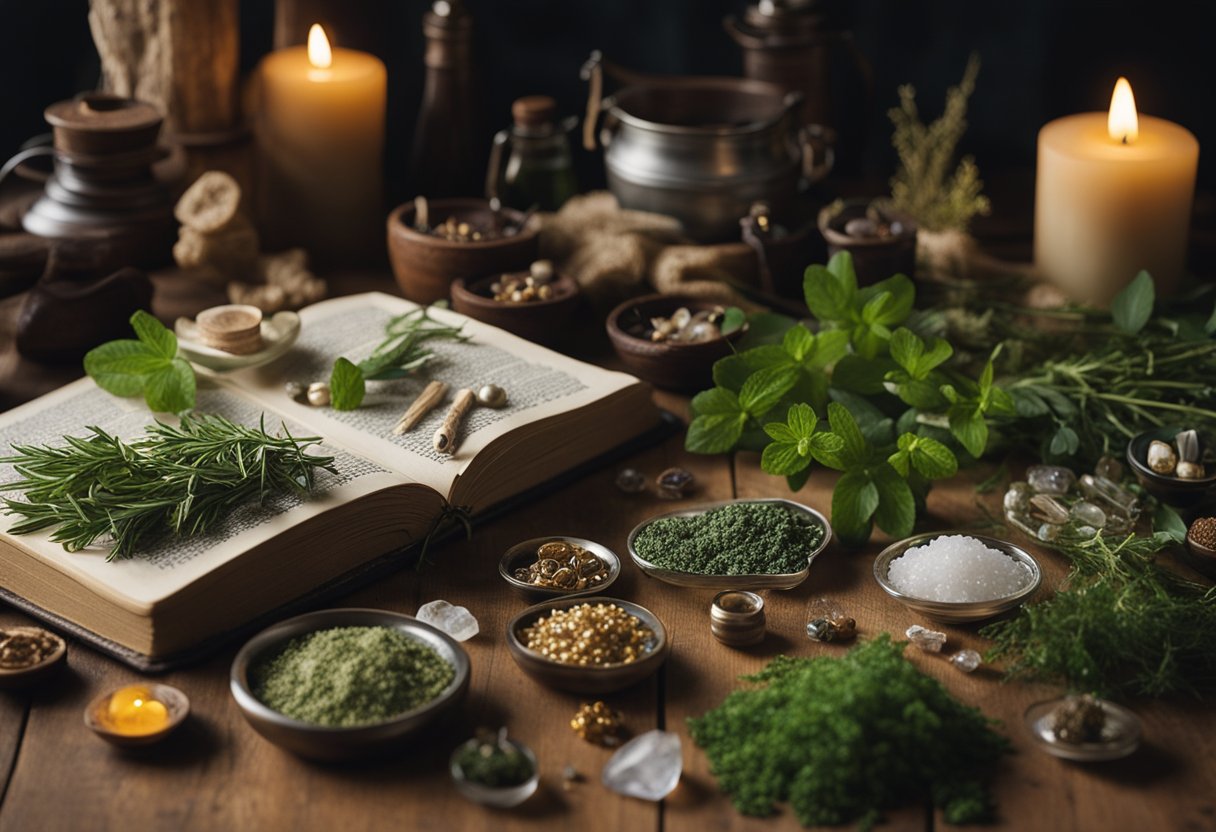
Updated On: April 23, 2024 by Eman Sameh
In tracing the heritage of Irish healing traditions, we uncover a realm where folk remedies and herbal lore are woven into the fabric of cultural identity. Our ancestors relied on the natural environment to address their ailments, drawing on a vast repository of knowledge passed down through generations. This symbiosis between the Irish people and their land is fundamental to understanding the practice of traditional medicine in Ireland, where every herb and ritual carries a story.
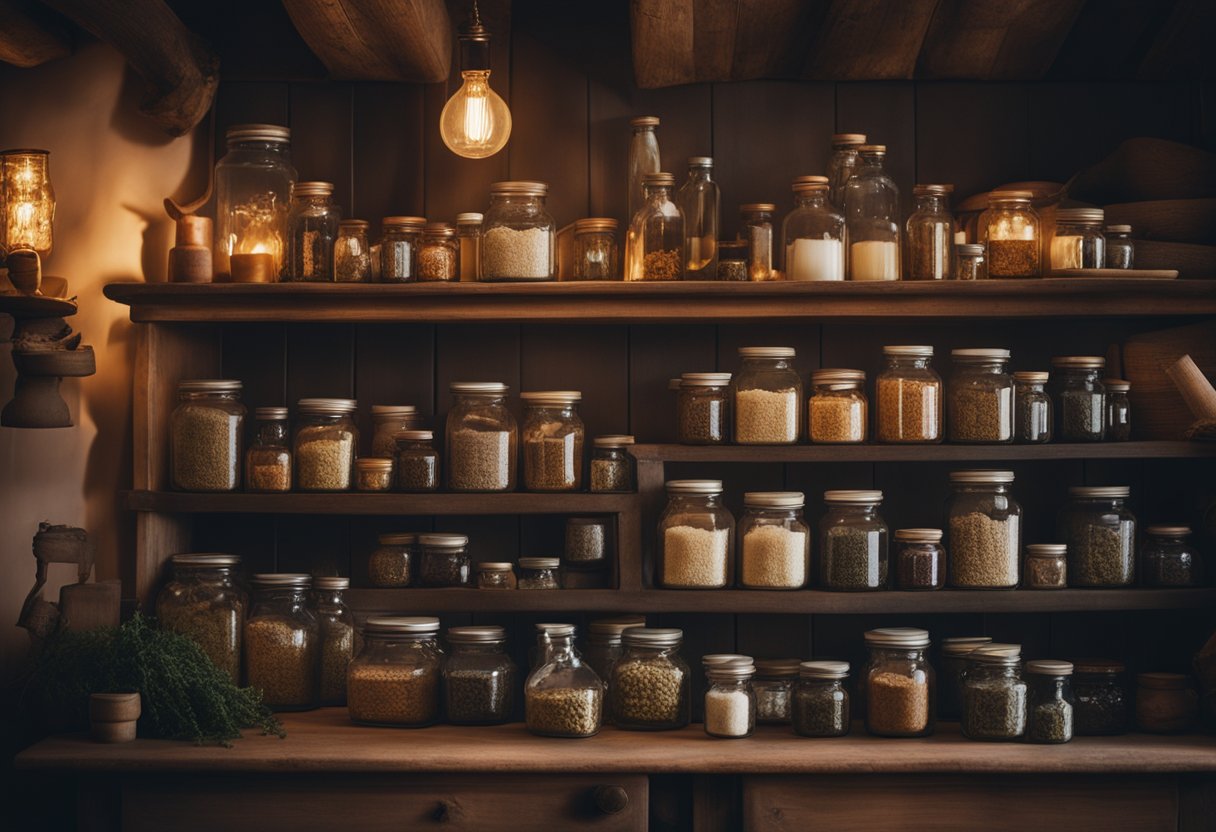
As we explore Irish folk healing, we encounter a tapestry of practices that are intrinsically linked to the nation’s history and spirituality. Herbal remedies concocted from the native flora are commonplace, reflecting a profound respect for nature’s healing powers. Likewise, the rituals and customs surrounding folk healing reveal a deep-seated belief in the interconnectedness of mind, body, and spirit—a belief that continues to intrigue and inspire those searching for holistic well-being.
Although modern medicine has eclipsed many ancient practices, there is a growing recognition of the value of Ireland’s folk healing and herbal wisdom. We see this in the resurgence of interest in natural remedies and the acknowledgement of the healing techniques practised by our ancestors. Our understanding of these traditions not only honours our cultural inheritance but also offers a window into a more sustainable and thoughtful approach to health care.
Historical Context of Irish Folk Healing
In the rich tapestry of Irish history, folk healing and herbal lore hold a special place, deeply interwoven with the land’s traditions and beliefs.
Origins and Evolution
The genesis of Irish folk healing tradition dates back to ancient times, rooted in pagan practices and a profound understanding of the natural world. Herbal medicine was a cornerstone of these early practices, with local flora utilised for their healing properties. Over time, Ireland became a repository for a confluence of cultural influences that shaped its folk cures.
Brehon Law and Monastic Influence
Under Brehon Law, the sophisticated legal system of early Ireland, medicine enjoyed a structured role within society. Monasteries played a pivotal part in this evolution, serving as centres of learning where medicinal knowledge was cultivated and disseminated. Their gardens often contained various healing herbs, evidencing the symbiotic relationship between spiritual life and folk healing.
Folklore Commission’s Role
The establishment of the Folklore Commission in the 20th century marked a concerted effort to preserve Ireland’s rich tradition of folk healing. This body systematically recorded remedies, oral history, and practices that otherwise might have been lost to time, ensuring the endurance of these cultural treasures.
Understanding Folk Medicine and Herbalism
In this section, we explore the rich tradition of Irish folk medicine and the practice of herbalism, examining their definitions and relationships with modern medicine.
Definition of Folk Medicine
Folk medicine constitutes the healing practices developed through communal cultural experiences and passed down across generations. This form of medicine is deeply entrenched in Irish heritage, encompassing knowledge of natural therapies, and is often practised by healers known locally as ‘bean feasa’ or wise women. Unlike formalised medical training in medical schools, folk medicine emerges from practical, lived experience and cultural beliefs rather than structured education.
Herbalism vs. Modern Medicine
Herbalism refers to using plants for their therapeutic properties, a cornerstone of both folk medicine and traditional medicine. This ancient form of health care utilises herbal medicine and is grounded in a holistic approach to treating the individual, considering the physical, emotional, and spiritual aspects. Complementary and Alternative Medicine (CAM) recognises the value of herbalism and is increasingly integrating it into modern practice, reflecting a synthesis of tradition and contemporary medical advancements. Even so, herbalism differs from modern medicine, which often focuses on specific symptoms and standardised treatments, highlighting a key distinction in the philosophy and methodology between the two disciplines.
Commonly Used Herbs and Plants
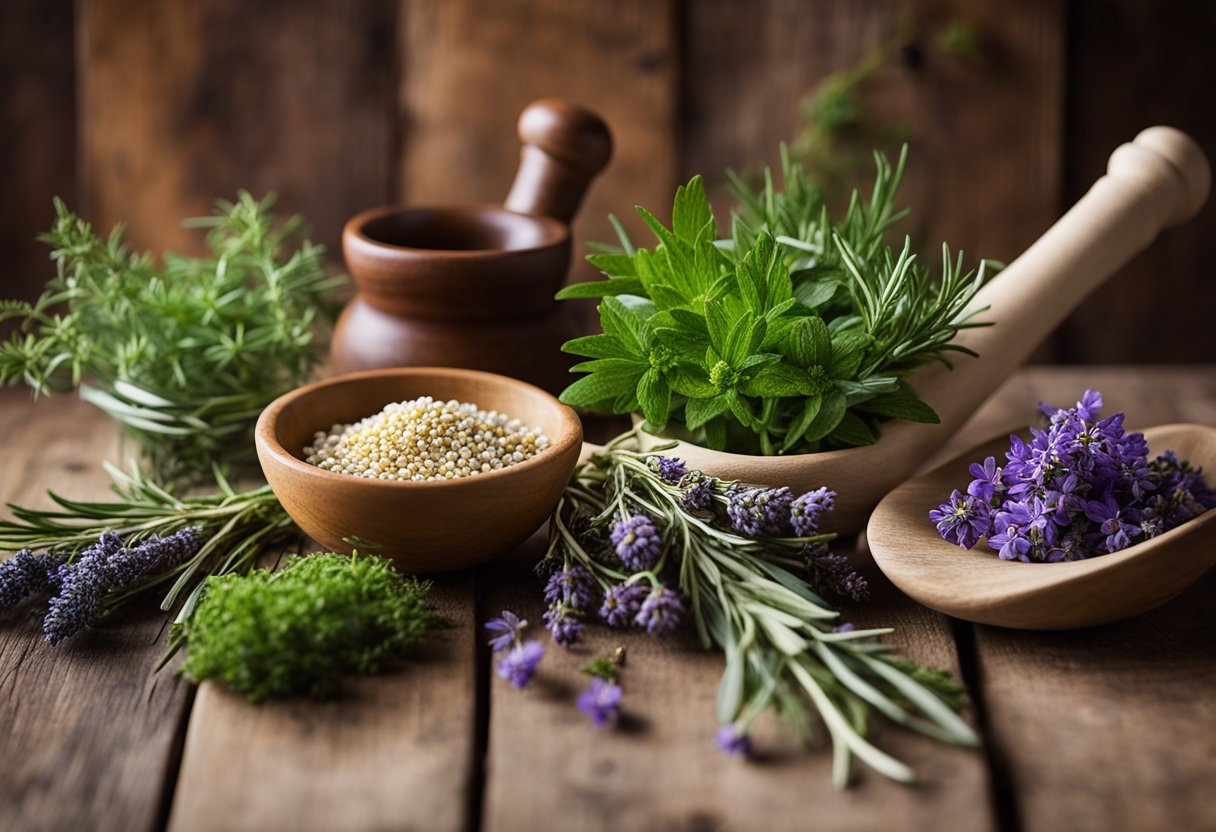
In Irish folk healing, we find a reliance on native flora for their therapeutic qualities. The knowledge of these plants and their uses constitutes a significant aspect of our traditional healing practices.
Medicinal Properties
Medicinal plants have a long history in Ireland for their natural healing properties. Foxglove (Digitalis purpurea), for instance, has compounds that are crucial in treating heart conditions. Willow bark is another example, prized for its salicylic acid content, which is the basis for aspirin and is effective in relieving pain and reducing fevers.
Identifying and Harvesting
Identifying and harvesting these herbs requires specific knowledge to ensure their safe use. For medicinal use, herbs should be identified accurately and harvested at the right time, usually when they are in full bloom or when their active compounds are at peak levels. For example, willow bark is traditionally harvested in the spring when the sap starts to flow.
Examples: Foxglove and Willow Bark
Foxglove: This plant is recognised by its tall spires of purple-pink tubular flowers. It is found in woodlands and hedgerows.
- Parts used: Leaves (collected safely, wearing gloves).
- Harvesting time: Early summer.
Willow Bark: Willow grows near rivers and moist areas. The willow tree is easy to identify by its slender, drooping branches.
- Parts used: Bark (stripped from young branches or twigs).
- Harvesting time: Early spring.
Therapeutic Applications and Ailments

Our ancestors placed great stock in the healing power of plants and the natural environment. Here, we touch on traditional Irish remedies specific to certain ailments and general health-promoting herbs.
Ailment-Specific Remedies
- Colds and Flu: A common folk remedy involved hot drinks with herbs, such as the classic hot whiskey with lemon and cloves, believed to soothe symptoms and provide comfort.
- Arthritis: The inflammation associated with arthritis was often treated with poultices. Comfrey or nettles might be used, and they should be applied directly to the skin to reduce swelling and pain.
- Fungal Infections: Crushed garlic or tea tree oil were topically applied to address fungal infections, taking advantage of their natural antifungal properties.
- General Aches: Another method to ease body aches was to soak in baths augmented with various medicinal plants or engage in hydrotherapy, using cold and hot applications.
Herbs for Prevention and Maintenance
- Nettle: Urtica dioica, commonly known as nettle, is an all-around herb for maintaining health. It is rich in nutrients and has historically been used as a detoxifier and blood purifier.
- Mint: Known for its soothing qualities, mint has been used to aid digestion and promote stomach health. It can also be inhaled to clear congestion from the sinuses.
Formatted in clear, brief paragraphs adhering to British English conventions, this section incorporates the imperative need to avoid exaggerated claims, delivering information in a confident, knowledgeable, neutral, and clear tone.
Healing Techniques and Rituals
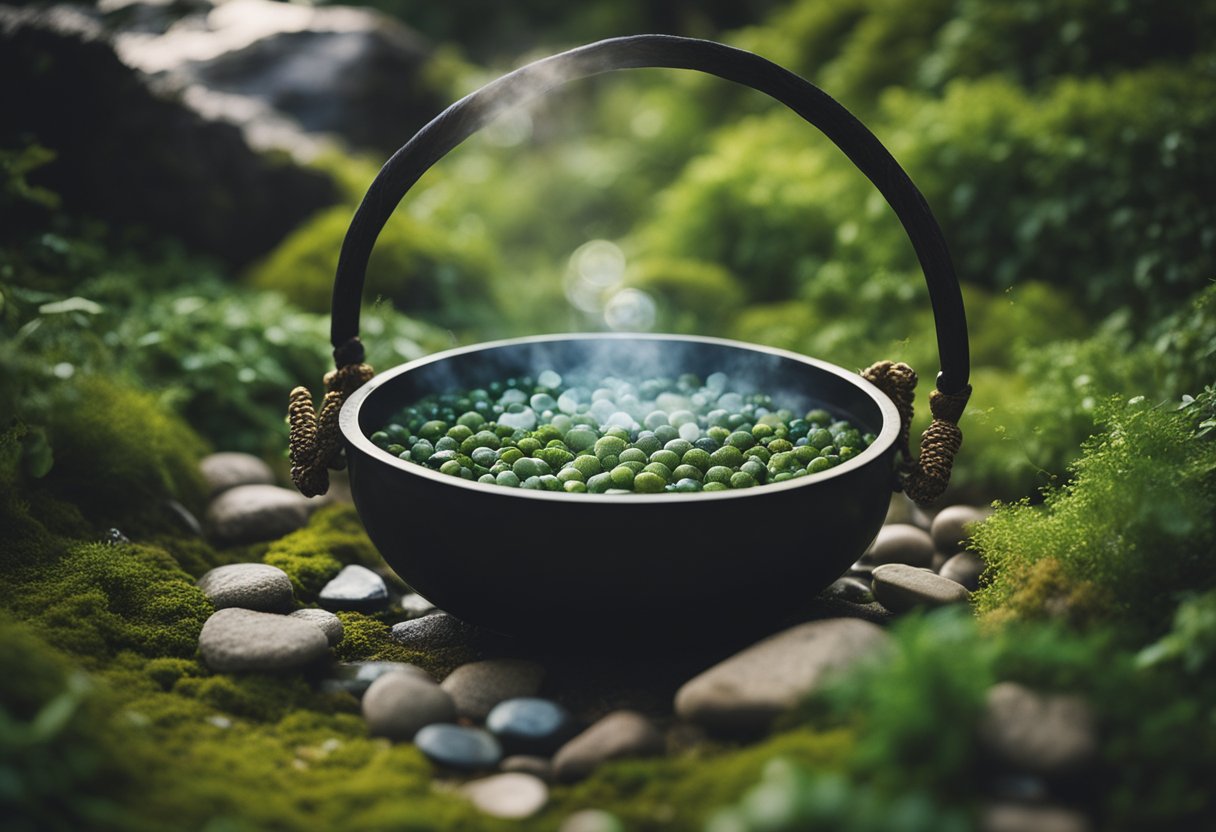
In our exploration of Irish folk healing, we uncover a rich tapestry of practices centred around faith and nature. These ancestral methods connect deeply to the Irish cultural identity.
The Role of Prayers and Charms
Prayers and charms form a core part of traditional Irish healing. Words are believed to carry significant power, and when imbued with intent, they can effect change in the physical world. Charms often consist of rhythmic phrases passed down through generations, whereas prayers might invoke the names of saints or use biblical language. Faith healers frequently use these spoken elements to address ailments, both physical and psychological.
Magic in the form of spoken or written words is thus not just a mystical element but a practical application in everyday healing scenarios. This underscores the interconnectedness of language and well-being in Irish tradition.
Traditional Healing Rituals
Rituals in Irish healing take various forms, from the precise application of herbs to the complex ceremonies conducted on specific days of the year. Some rituals may include burning certain plants while reciting prayers or creating talismans, which are objects believed to hold healing properties.
These acts are often performed by individuals recognised within their communities as having a special gift or knowledge, such as the faith healer. Herbal knowledge plays a significant role, with remedies and treatments being derived from native flora, reflective of an intimate connection with the land.
Our insight into these practices offers a view into a world where every plant, every word, and every gesture is part of a holistic approach to health, rooted deeply in the cultural consciousness of Ireland.
Cultural Significance of Cures and Charms
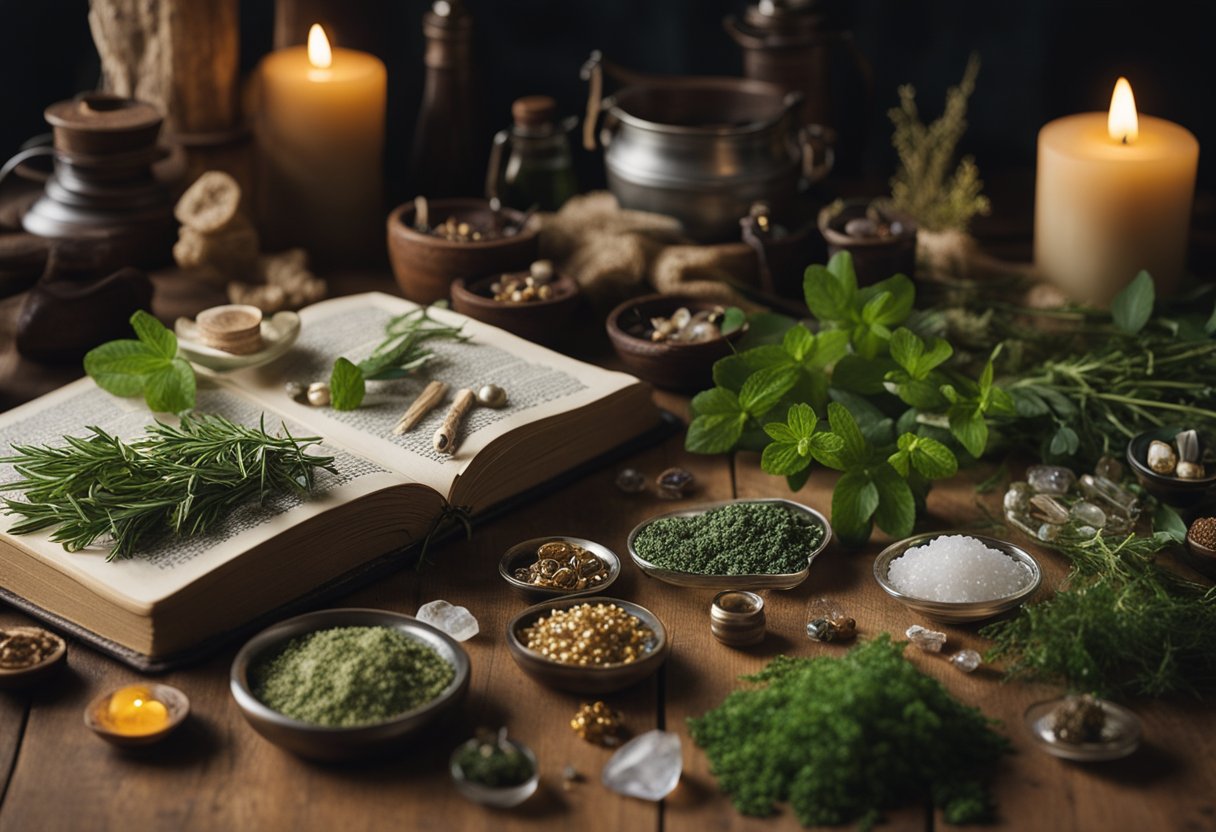
In the rich tapestry of Irish tradition, ‘Cures’ and Charms hold a significant place, with deep-seated beliefs in their power to heal and protect.
‘The Cure’ in Irish Tradition
The Cure’, or the practice of healing in Irish folklore, is intrinsically connected to our collective identity. We acknowledge diverse ailments, from warts to thrush, that have been traditionally treated using cures passed down through the generations. The knowledge of such cures was often a closely guarded secret, known only to specific families and individuals bestowed with the gift of healing. It was commonly believed that the effectiveness of ‘The Cure’ hinged upon the unique power of the healer and the faith of the suffering.
Charms for Specific Conditions
Charms, as an extension of this folklore, are specific verses, items, or rituals designed to alleviate particular conditions. We understand that these charms were deeply embedded in Irish life, each with a prescribed method and application unique to the condition it treated. For example, a common charm might involve reciting a prayer over water, which would then be used to soothe and heal. The cultural importance of these practices lies not just in their use as remedies, but also in their role in strengthening communal bonds and affirming shared cultural beliefs.
These practices remind us how our ancestors found solace and remedy amidst suffering, standing as a testament to their resilience and wisdom.
Influence of Irish Folk Healing Worldwide
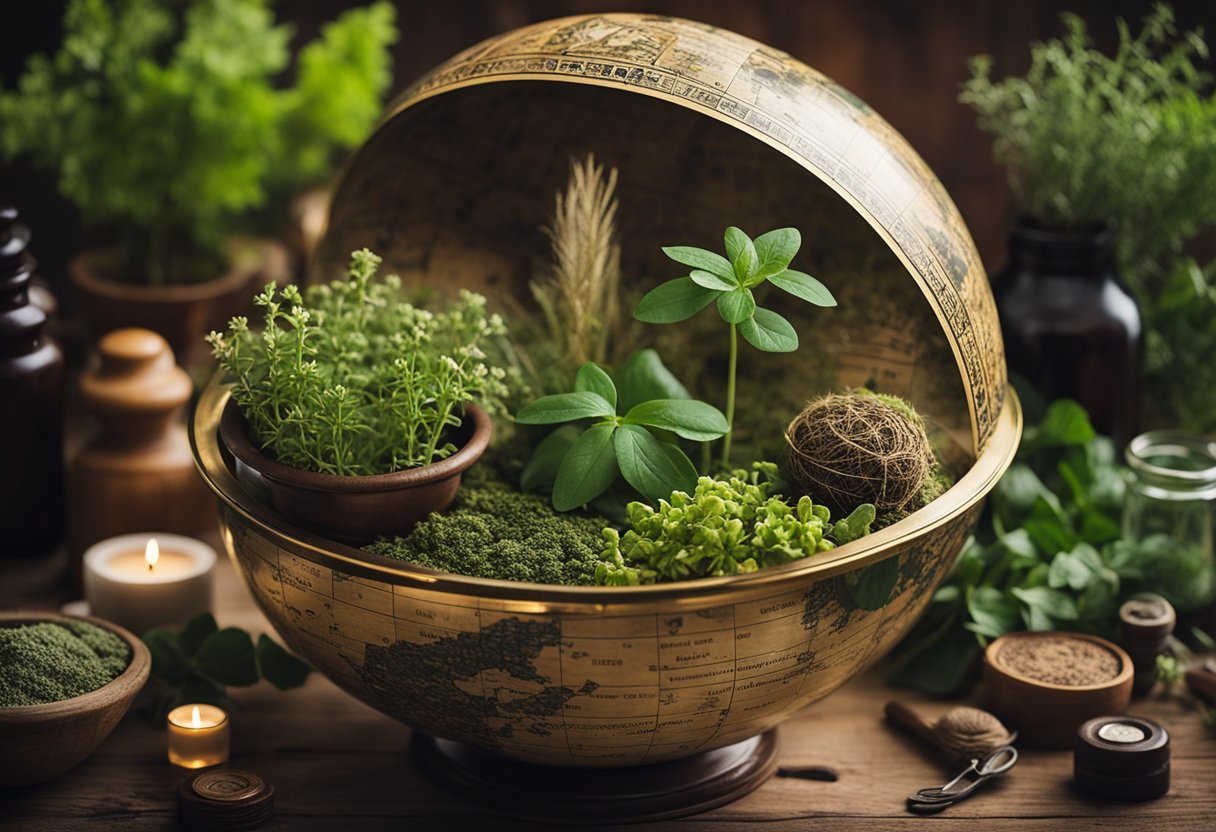
Irish folk healing has woven its influence into the fabric of global alternative medicine, establishing a legacy that merges tradition with modern appreciation. This unique form of healing manifests across different cultures, particularly through the Irish Diaspora and the shared knowledge of herbal lore.
Comparison with Other Healing Traditions
Irish folk medicine offers a unique approach to healing, deeply rooted in the cultural fabric of Ireland. When compared to other traditional forms of medicine, such as Ayurveda, which originates from India, we find similarities in the use of natural herbs and a holistic approach to treating ailments. Both traditions place a significant emphasis on balance and the interconnectedness of the mind and body, yet they have evolved separately, influenced by their own distinct cultural and environmental contexts. Within Trinity College Dublin, initiatives and studies into the efficacy of local herbs have echoed these sentiments, providing academic reinforcement to the knowledge passed down through generations.
Irish Diaspora and Cultural Exchange
The migration of the Irish people has been instrumental in the diffusion of Irish folk healing practices across the globe. As members of the Irish Diaspora set roots in new lands, they brought with them the traditional herbal remedies and healing techniques that defined their cultural identity. This exchange has translated into a tangible contribution to the alternative medicine industry, where Irish herbal remedies have been integrated into a broader market, allowing a wider audience to experience and benefit from Ireland’s rich heritage in natural healing. Our understanding and appreciation of these healing practices have been enriched by these contributions, illustrating a successful blend of tradition with newfound context.
Modern-day Herbalists and Practitioners
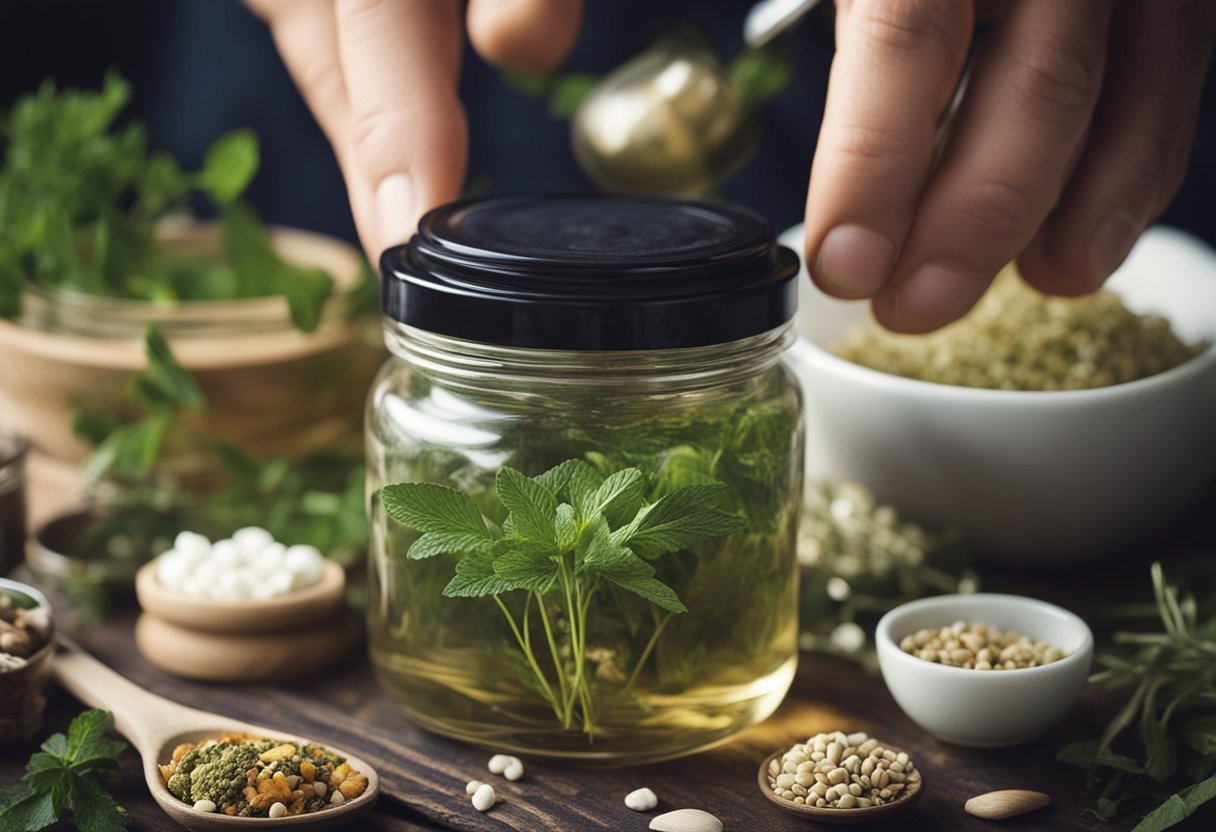
In the contemporary landscape of Irish healthcare, modern herbalists and traditional medicine practitioners occupy a special niche. Combining age-old wisdom with current regulatory rigor, these professionals offer a bridge between past and present healthcare methodologies.
Professional Training and Standards
The practice of herbalism in Ireland today is not merely a throwback to the past; it is a regulated profession requiring significant education and adherence to established standards. Herbalists must often complete rigorous programmes at accredited medical schools or dedicated herbal institutions. This professional training ensures practitioners are knowledgeable in both the history of traditional medicine and modern research and methods.
Courses cover a breadth of subjects, from botany and pharmacology to clinical skills, ensuring a well-rounded expertise. Upon completion, practitioners may join professional bodies like the Irish Institute of Medical Herbalists, which require members to uphold a strict code of ethics and follow continuous professional development.
Industry and Economic Aspects
While niche, the industry surrounding herbal medicine and folk healing contributes to the local and national economy. It bridges various sectors, including agriculture, where medicinal herbs are cultivated, through the retail of herbal supplements and consultations offered by practitioners. The revenue from this industry supports local economies and often goes back into further research and development, reinforcing the cycle of innovation within traditional medicine practices.
It’s an industry marked as well by its collaborations with the wider medical community, encouraging ongoing studies to integrate herbal remedies safely and effectively within broader therapeutic frameworks. Our current understanding of this integration is often supported and disseminated through platforms like www.connollycove.com, which celebrate and explore the cultural significance of Irish traditions in a global context.
As we proceed into the future, these facets of modern-day practice will likely continue to evolve, as will the economic structures that support them, ensuring that traditional methodologies enrich our contemporary medical landscape.
Controversies and Criticisms of Folk Healing
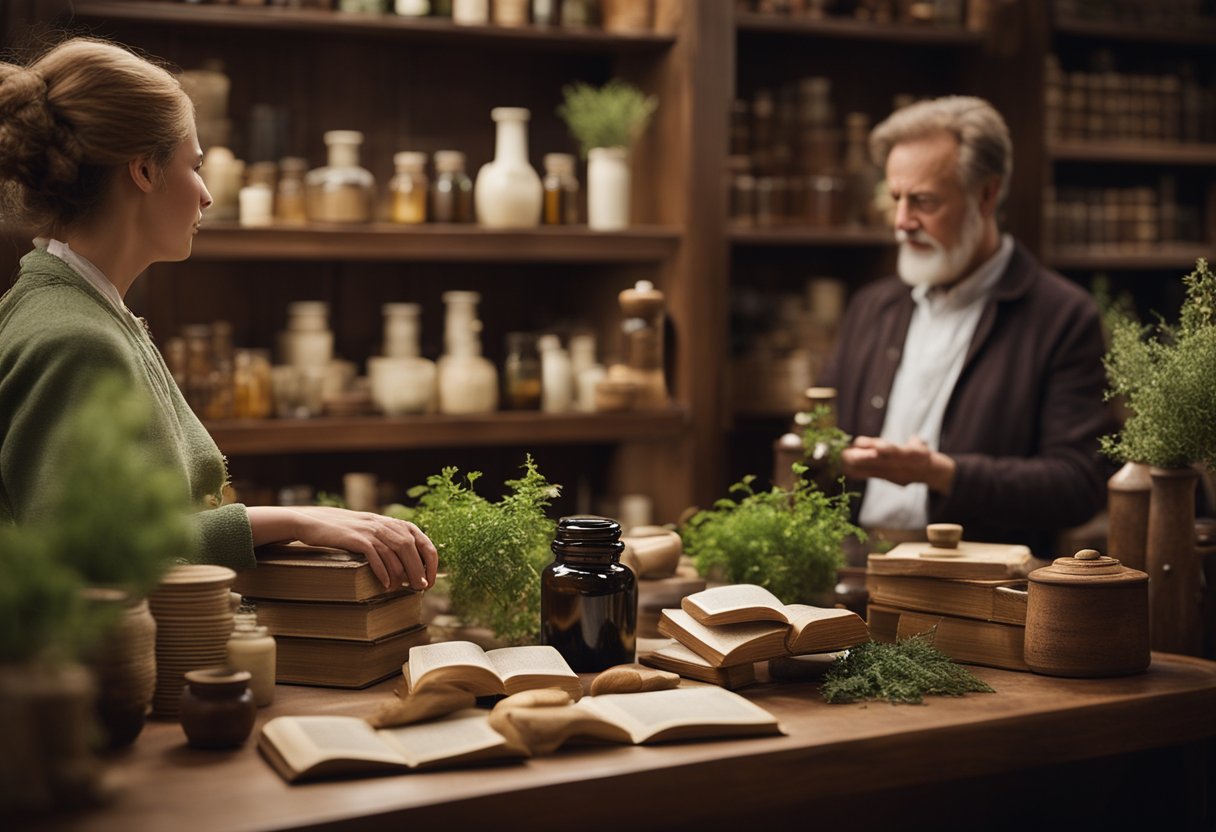
In examining Irish folk healing and herbal lore, it’s important to address the debates surrounding its medicinal effectiveness and safety, as well as to consider the legal and ethical issues involved.
Medicinal Efficiency and Safety
We understand that traditional practices like folk healing have a storied history, often passed down through generations. Research into these methods, however, often highlights a lack of empirical evidence to support the efficacy of certain folk remedies. This raises concerns about safety, particularly when individuals choose these methods over proven medical treatments. Moreover, interactions between herbal remedies and conventional pharmaceuticals can pose risks which may not be thoroughly understood.
Legal and Ethical Considerations
As we move into a more regulated and standardized healthcare environment, the integration of Complementary and Alternative Medicine (CAM) with established practices invites legal scrutiny. Regulations strive to protect patients from unverified treatments and ensure that medical schools convey sound, scientifically backed education. There’s also the ethical concern of preserving cultural heritage and knowledge without exploiting it for industry financial gain. Legal frameworks must strike a balance, ensuring patient safety while respecting the integrity of traditional knowledge and practices.
Conservation and Sustainability Efforts
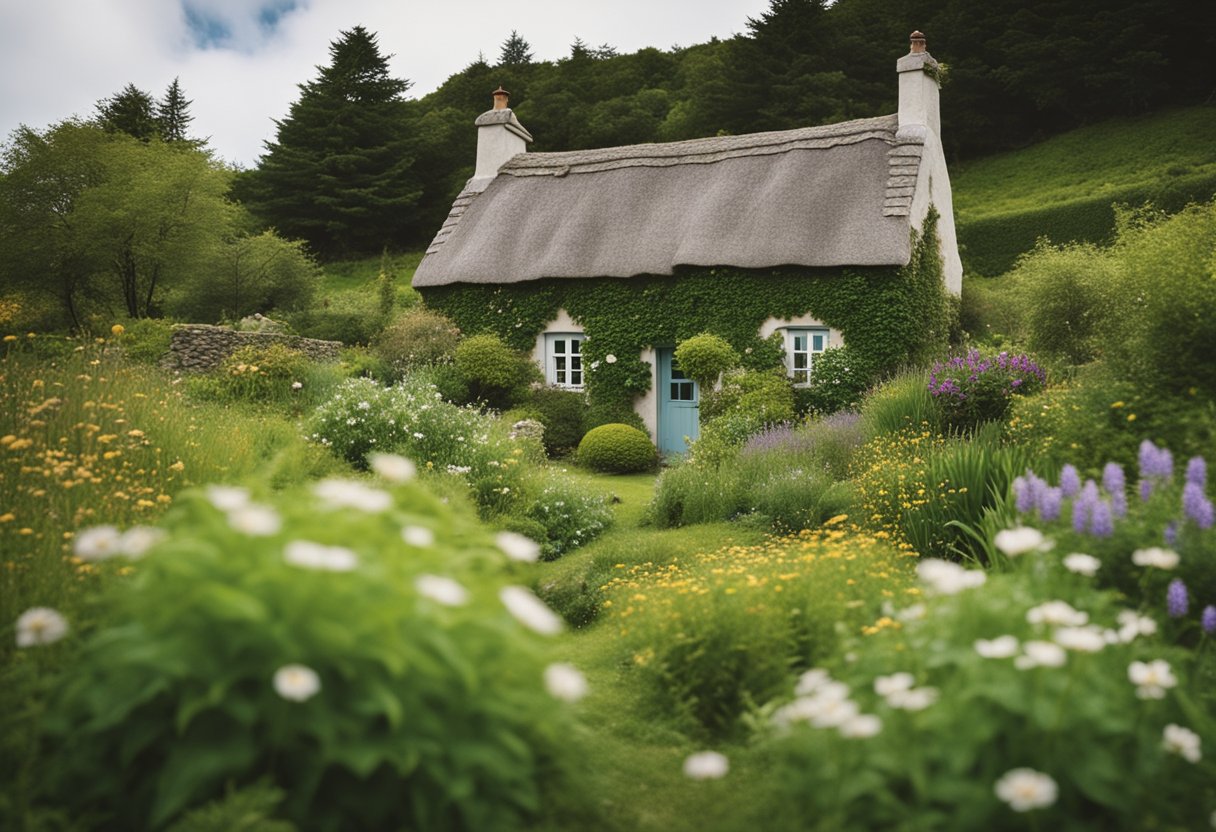
In this section, we will examine how conservation and sustainability are crucial for the continuation of Irish folk healing and herbal lore. These considerations ensure the environmental integrity and preservation of knowledge for future generations.
Environmental Impact on Herbal Lore
The practices surrounding herbal lore inherently depend on the health of our ecosystems. Research indicates that over-harvesting of wild herbs can lead to a decline in plant populations, which in turn affects the biodiversity within an ecosystem. Industry stakeholders and local communities are collaborating to implement sustainable harvesting methods to mitigate this impact. For instance, guidelines are established for the quantity of herbs collected and the frequency of harvests to enable plant recovery and regrowth.
Preserving Knowledge and Biodiversity
The preservation of traditional knowledge is as important as the conservation of the herbs themselves. Programmes dedicated to research and documentation are vital in capturing the extensive wisdom of Irish folk healing. Concurrently, industry players recognise the value of such knowledge in developing new wellness products based on time-honoured herbal remedies. By ensuring the sustainability of these practices, we protect not only the plant species but also the cultural heritage they represent. Notably, initiatives aimed at creating seed banks and protected areas of land help maintain the necessary biodiversity to support both current and future applications of herbal lore.
Frequently Asked Questions
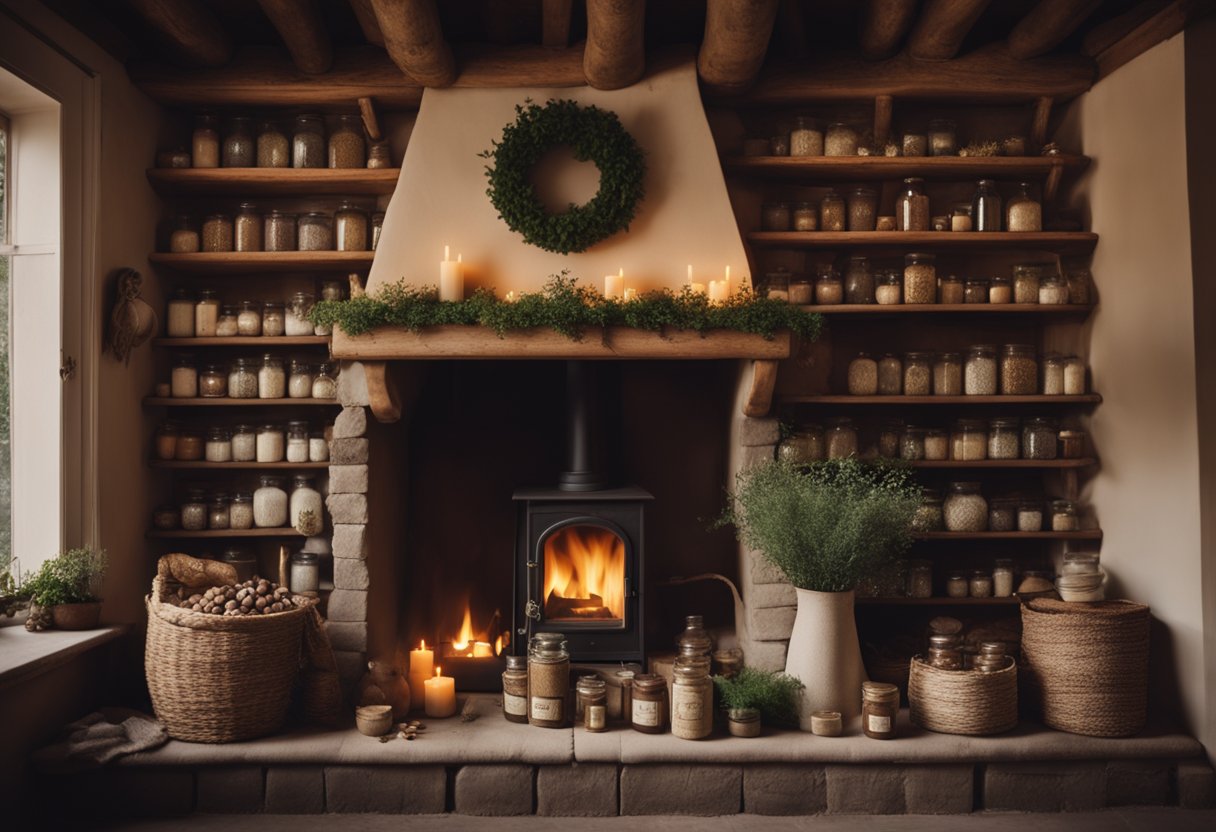
In this section, we’ll cover some of the most frequently asked questions about Irish folk healing and herbal lore. We’ll look at traditional herbs used in remedies, the role of healers in Irish society, ancient Celtic medicinal practices, treatment methods in traditional Irish medicine, sacred plants in Celtic lore, and the significance of herbalism in Irish cultural history.
Which herbs are traditionally used in Irish folk remedies?
Herbs such as yarrow, nettle, and dandelion have been fundamental to Irish folk medicine, valued for their healing properties. Yarrow, for example, was often used for its ability to staunch bleeding.
Can you describe the role of healers in old Irish society?
Healers, often known as wise women or men, held a respected place in old Irish society. They offered natural remedies and treatments to those in need, acting as both custodians of herbal lore and practitioners of healing arts.
What were the common medicinal practices among the ancient Celts?
The ancient Celts incorporated a range of practices, including herbal remedies, rituals, and charms. Their approach to medicine was deeply entwined with their spiritual beliefs and natural environment.
How were illnesses treated in traditional Irish medicine?
Traditional Irish medicine often employed a variety of natural and especially herbal remedies, many of which are the foundation stones for today’s orthodox medicine. Treatments could also involve rituals believed to invoke healing energies.
Which plants were considered sacred in Celtic herbal lore?
Plants like mistletoe and vervain were considered sacred by the Celts, often used in ceremonies and believed to possess protective and healing properties. Such plants played a pivotal role in both the physical and spiritual aspects of life.
What is the historical significance of herbalism in Irish culture?
Herbalism is interwoven with Ireland’s history and culture, reflecting a rich tradition of knowledge passed down through generations. It serves as a testament to the intertwining of Irish culture with the natural world and its resources.






